in Giethoorn you will not hear the noise of an engine, nor of a horn; the boats, with electric motors, move slowly through the canals. The song of a bird or the squawk of a swan will be the only sound that accompanies your walk. Because Giethoorn It is synonymous with serenity.
An hour and a half by car; a train to Steenwijk and a bus to Giethoorn; a train to Meppel and a taxi to Giethoorn; a private tour; a shared tour; or even by bicycle, there are many ways to cover the 120 kilometers that separate amsterdam and Giethoorn, what is certain is that when you arrive you will forget how, when and why.
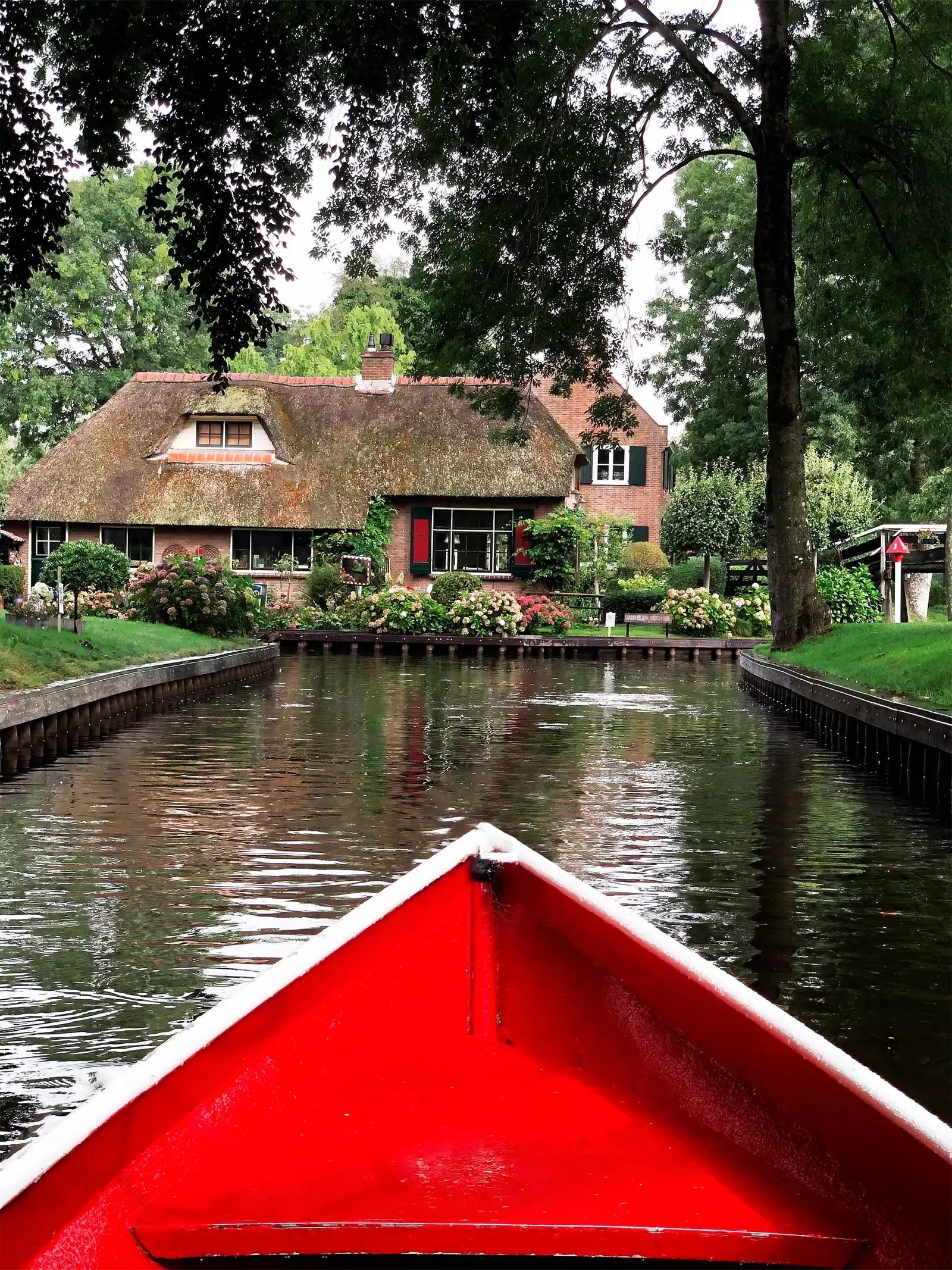
One of the Giethoorn canals.
A VILLAGE WITHOUT ROADS
Giethoorn is a town without roads, there are some narrow paths where it is possible to walk or ride a bike, But to get to most homes, cafes, restaurants – even one with a Michelin star – and shops you have to do it by water. Everywhere you look there are boats, of different sizes and colors. And wherever you look you don't see cars, or smoke.
The town's flag, which can be found in many corners, is yellow, red and blue and has striking goat horns as a shield. The first settlers in the area arrived in the 13th century, it is said that they were foreigners and fugitives from northern Italy.
When they arrived they found many horns and skulls of goats Among the mud, it is believed that numerous goats drowned in the enormous floods of 1170, known as the All Saints Flood, and that is where the name of this town comes from: Giethoorn was formerly 'goat horn' (goat horn).
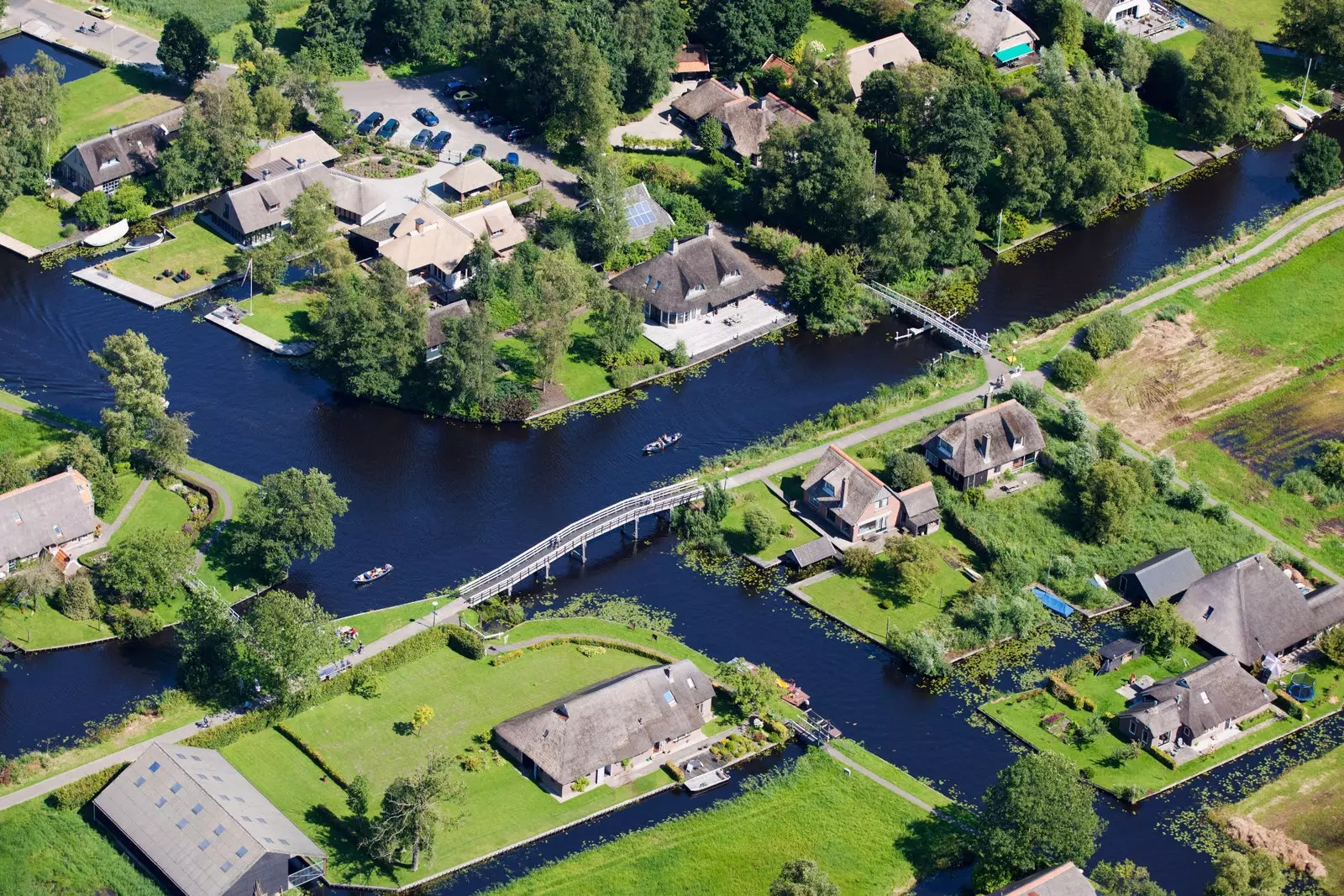
Giethoorn from the air.
THE BOAT, AN ESSENTIAL
The town is well cared for. The grass is a perfectly cut mantle, as if a ball were about to roll at any moment. The roofs, steeply sloped to repel rain and snow, are made of straw and, curiously, they change color depending on the weather: yellowish straw in the sun; dark brown when wet, most common.
On the plots of the houses, instead of having a car parked, there is a boat turned upside down waiting to take the family to work or school. Ice skating boots are also seen hanging on doors: when the canals freeze, common in Dutch winters, the boats are replaced by these tempered steel blades.
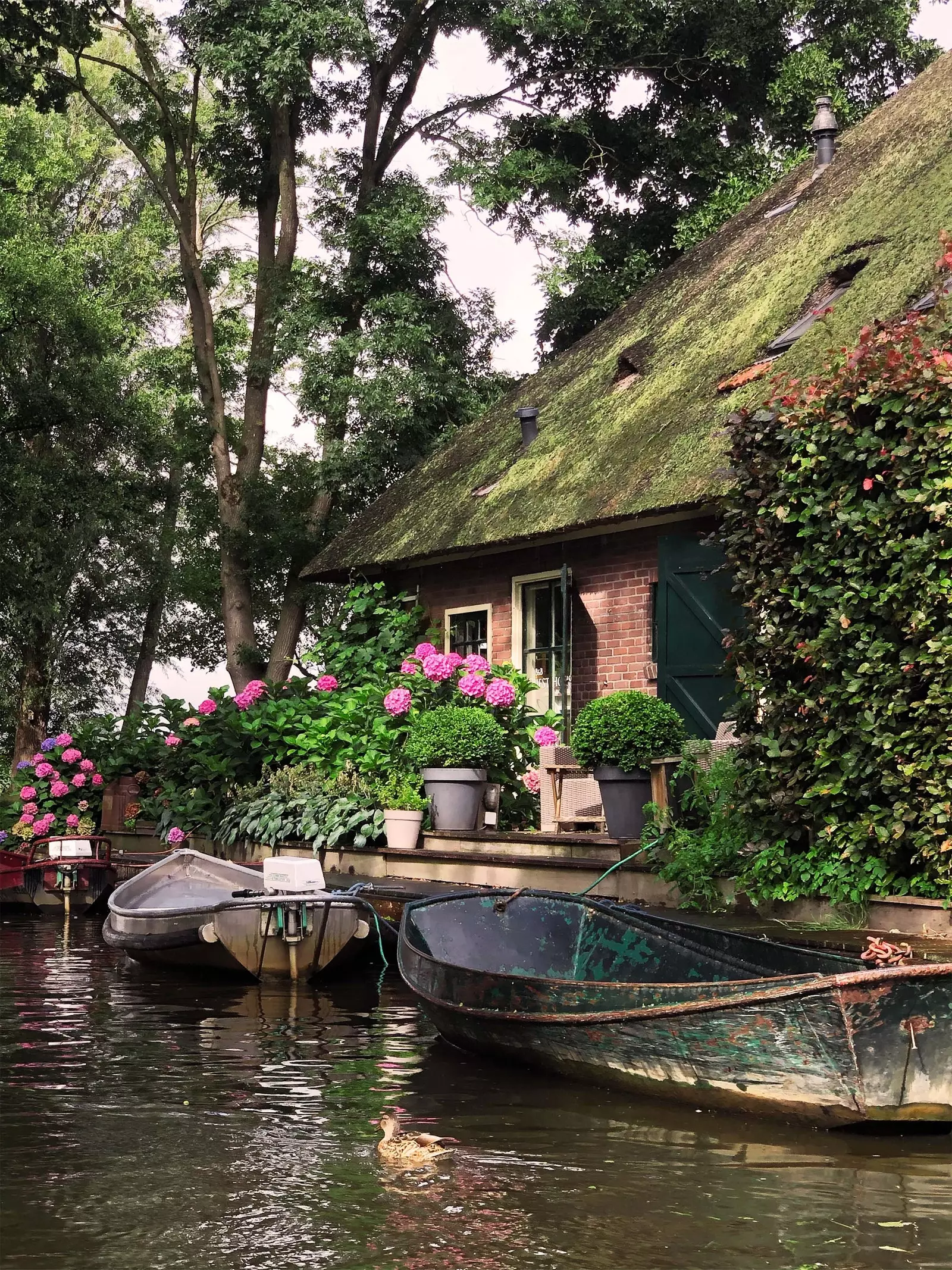
There are no parked cars here, only boats.
The mailboxes hang –very close to the water– of the wooden bridges that connect plots, and in many of them the postman will not have to get off the boat to deliver correspondence.
Touring Giethoorn by boat is imperative. For 20 euros you can rent a boat: a whisper boat (whisper ship or whisperer): for that reason of being electric and calm. The boat does not come with a captain, so write down: if you turn the rudder to the left, the boat will turn to the right, and vice versa.
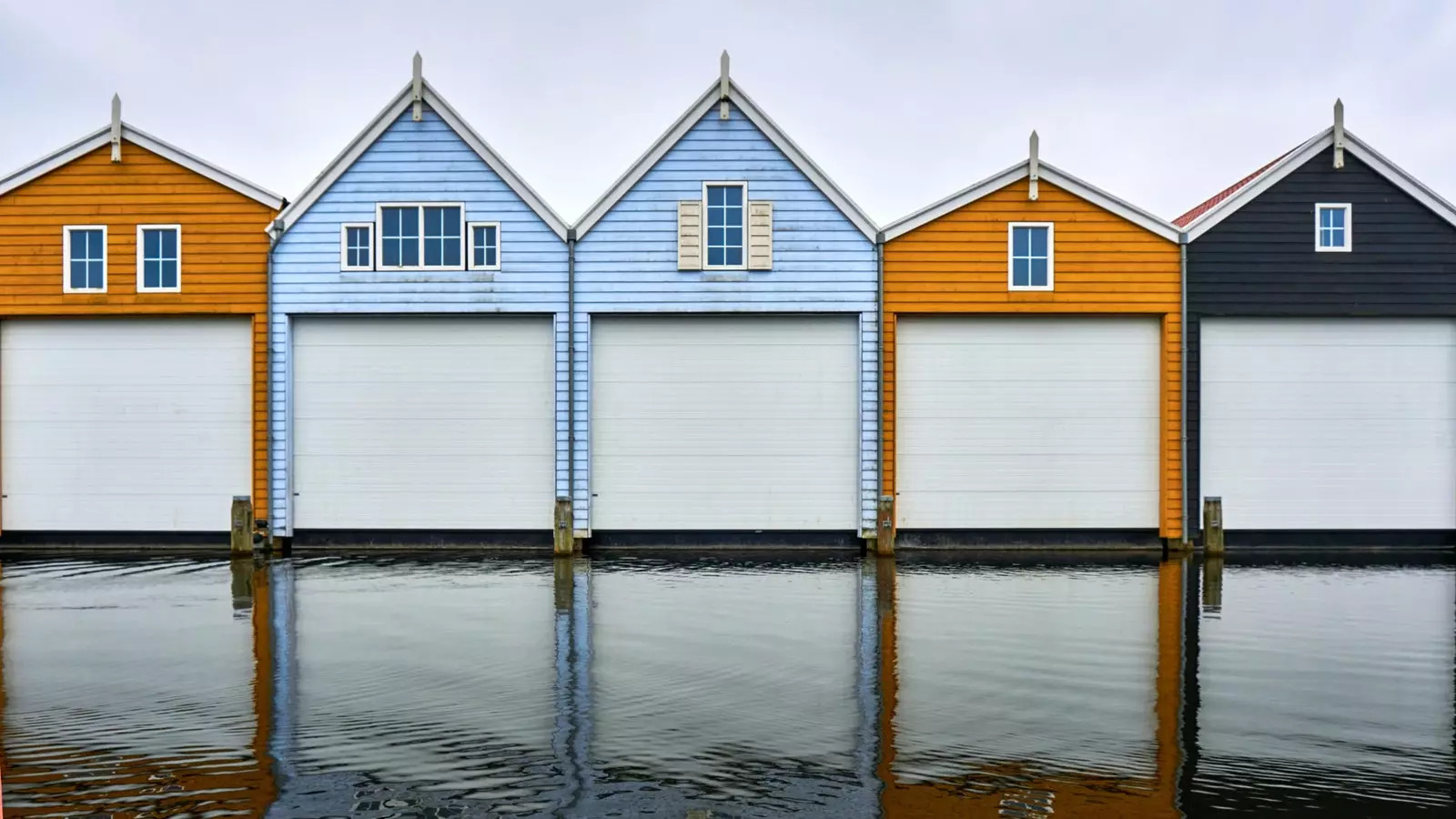
Pier.
It is not difficult, but more than one tourist has been stuck in the middle of a canal causing one of the few traffic jams seen around here. Once you master the navigation technique you have countless channels to get lost (up to six kilometers), also, a little further, there is a huge swampy lake where you can steer
The boat ride during the day is beautiful, but when twilight comes and the lanterns are lit, the town is charming, in both meanings of the word: it cheers your senses, and it wraps you in some arcane spell.
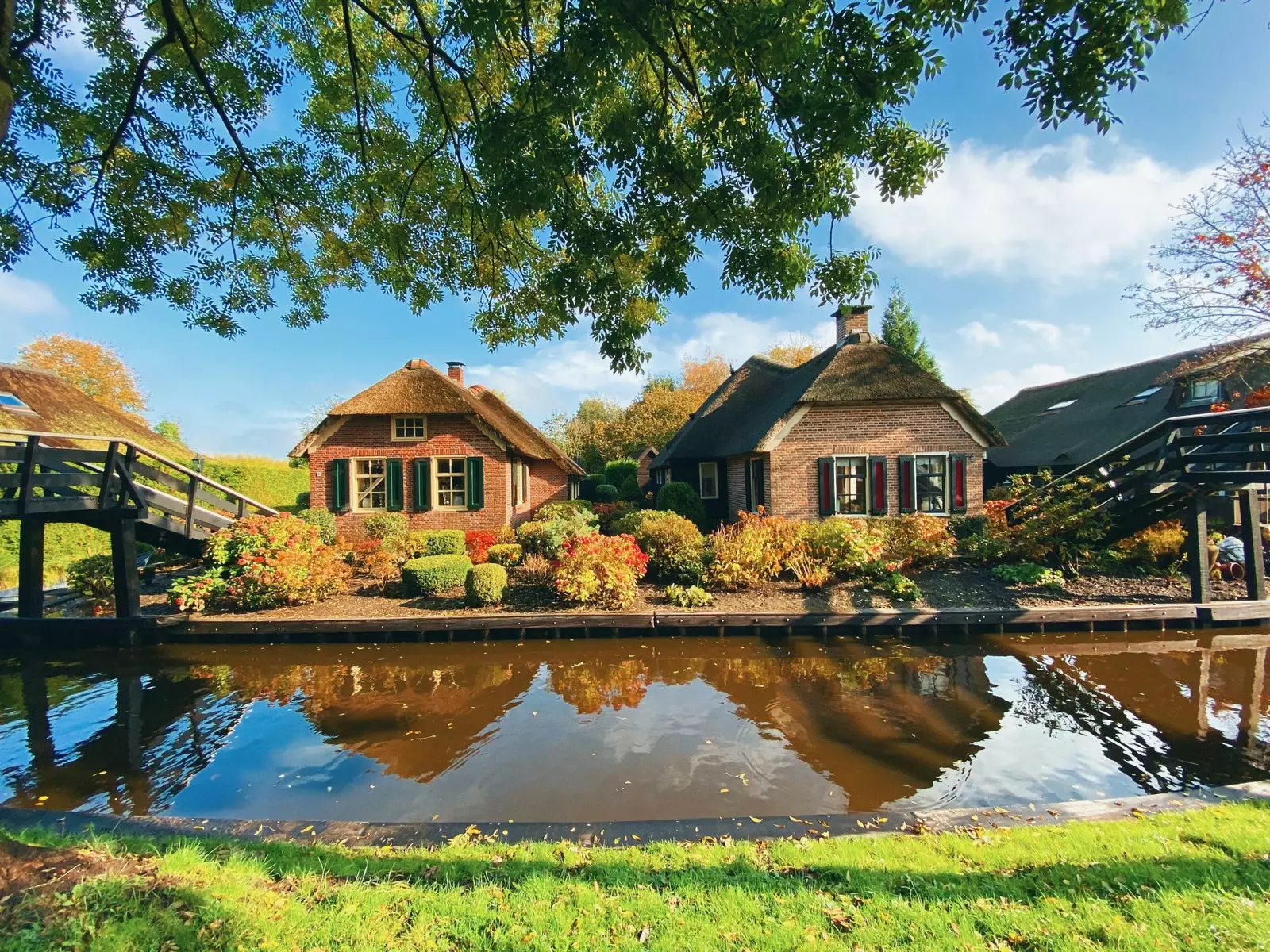
Giethoorn.
A friend told me no that I did not say that Giethoorn is like that Italian city, the one with striped sweaters and gondolas, the one full of canals and bridges, which is already well-thumbed. And I've come this far without saying it, but now, Navigating these canals at night, in a town silent as a cloister And with the first lonely lights that begin to flicker in the sky, Giethoorn seems too beautiful to me and I believe that, on this occasion, he has earned the nickname by which he is known: 'The Venice of the North'.
